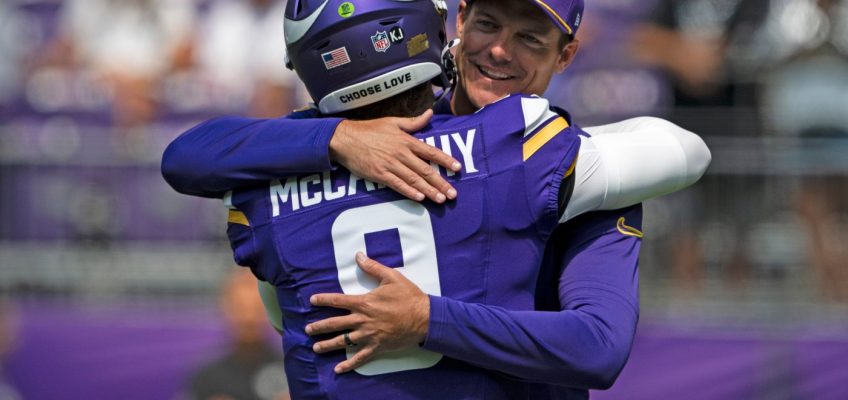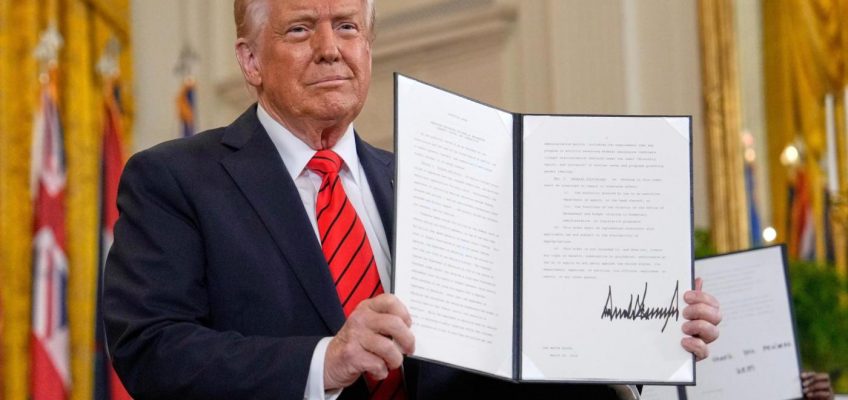Este año, el plazo para presentar la declaración de impuestos finaliza el 15 de abril. Averigüe si tiene derecho a asistencia gratuita y dónde encontrarla en esta guía.
Un sitio de preparación gratuita de impuestos financiado por la ciudad en Food Bank for NYC en 2015. (Foto de William Alatriste para el NYC Council)
Este artículo se publicó originalmente en inglés el 20 de marzo. Traducido por Daniel Parra. Read the English version here.
La temporada de impuestos está en marcha, y si eres como muchos que esperan hasta el último momento y no estás seguro de dónde ir, City Limits ha preparado esta guía.
Si bien algunas grandes empresas anuncian servicios de declaración de impuestos gratuitos, lograrlo puede resultar laborioso y llevar mucho tiempo. Así que desde hace varios años, tanto el gobierno federal como la ciudad de Nueva York han creado opciones sencillas para que la gente pueda declarar impuestos de forma gratuita.
Este año puedes declarar gratis a través de los programas de la ciudad si vives o trabajas en la Gran Manzana y ganaste $65.000 dólares o menos en 2024, o tu familia ganó $93.000 dólares o menos. Esto incluye a los trabajadores indocumentados, independientes, o pagados en efectivo, ya que los EE.UU. requiere que todos los trabajadores paguen impuestos sobre sus ingresos.
El NYC Free Tax Prep, gestionado por el Departamento de Protección al Consumidor y al Trabajador (DCWP por sus siglas en inglés), ofrece servicios gratuitos de preparación de impuestos a todas las personas que cumplan los requisitos de ingresos indicados anteriormente, independientemente de su estatus migratorio.
En esta guía City Limits ofrece una visión general del proceso a quienes necesiten ayuda de forma gratuita con su declaración.
¿Quién debe declarar impuestos en 2025 y quién tiene que hacerlo?
En general, casi todo el mundo que haya percibido ingresos en 2024 o que tenga derecho a un crédito fiscal.
Cada año, el Servicio de Impuestos Internos (IRS por sus siglas en inglés) fija los ingresos mínimos que deben declarar impuestos, teniendo en cuenta varios factores como la situación fiscal (soltero, casado que presenta una declaración conjunta, cabeza de familia), ingresos y edad.
La mejor manera de saber la respuesta para su caso concreto es completar un cuestionario del IRS, disponible en línea aquí.
Por ejemplo, si presenta impuestos como soltero, menor de 65 años con ingresos de al menos $14.600 dólares en 2024, deberá declarar impuestos. Para las parejas casadas que presentan una declaración conjunta, los ingresos son de $29.200 dólares si ambas personas tienen menos de 65 años, o de $32.300 dólares si ambas tienen más de 65 años.
Si usted tiene más de $400 en ganancias netas en 2024 de trabajo por cuenta propia, el DCWP explicó, entonces usted también tiene que presentar impuestos.
¿Qué documentos se necesitan?
Se necesitan tres conjuntos de documentos: un documento de identidad con fotografía emitido por el gobierno (que puede ser la tarjeta de identificación de la ciudad conocida como IDNYC), la tarjeta con el número de la Seguridad Social o el número de identificación personal del contribuyente (ITIN por sus siglas en inglés), y soportes de ingresos (como formularios W-2, 1098 o 1099) e información bancaria. Para consultar la lista completa de documentos, haga clic aquí.
Para los trabajadores independientes de Nueva York se requiere otra documentación como gastos del negocio, facturas pagadas, cheques depositados, cargos en tarjetas de crédito e información sobre cualquier espacio de oficina en casa. El DCWP tiene un kit de herramientas aquí con la lista de documentos necesarios.
¿Y si no tiene número de Seguridad Social?
Los contribuyentes pueden obtener un número de identificación personal del contribuyente (ITIN por sus siglas en inglés) del IRS para declarar impuestos. Solicite un ITIN presentando una solicitud (con el formulario W-7 del IRS) con su declaración de impuestos.
Hay otras maneras de solicitar un ITIN, como ponerse en contacto con un agente de aceptación aprobado por el IRS o concertar una cita con los Centros de Asistencia al Contribuyente del IRS. Para una lista de sitios de impuestos que ofrecen estos servicios, visite el sitio web del IRS aquí.
Para obtener instrucciones paso a paso y recursos adicionales, un portavoz del DCWP recomienda leer las preguntas frecuentes sobre el ITIN.
¿Quién puede optar por la preparación gratuita de impuestos en Nueva York?
El DCWP animó a todos los neoyorquinos que trabajan por cuenta propia a participar en los talleres y consultas de la ciudad. Sin embargo, solo ciertos declarantes son elegibles para recibir ayuda a través de NYC Free Tax Prep: familias con un ingreso anual de $93.000 dólares o menos, declarantes solteros que ganaron $65.000 dólares o menos en 2024, o independientes y propietarios de pequeñas empresas con gastos comerciales inferiores a $250.000 dólares.
¿Dónde puedo declarar impuestos gratis?
Más de una docena de organizaciones de toda la ciudad prestan sus servicios a los neoyorquinos a través de la NYC Free Tax Prep Coalition, según explicó un portavoz del DCWP. Esta es la lista completa de organizaciones que prestan estos servicios de forma gratuita:
AARPArivaBedford Stuyvesant Restoration Corporation (BSRC)Bronx NHSBronxWorksCenter for Family LifeChhaya CDCCOJO FlatbushCommunity Tax AidEducational Alliance
Fedcap – Single StopGrace Church of GodGrow BrooklynInternational Rescue CommitteeIRS Stakeholders, Partnerships, Education & CommunicationLaGuardia Community CollegeMinkwon Center for Community Action, Inc.Mosholu Montefiore Community CenterNational Association of Black Accountants – New York ChapterNazareth HousingNew York Cares
Northern Manhattan Improvement CorporationNYC ServiceNYS Department of Taxation and FinanceProject HospitalityThe Mayor’s Fund to Advance New York CityUnited Way WorldwideUrban UpboundYork College VITA
Para encontrar la mejor ubicación para usted, llame al 311 o visite el mapa del programa NYC Free Tax Prep o los programas IRS Volunteer Income Tax Assistance (VITA) y Tax Counseling for the Elderly (TCE). Los servicios están disponibles en diferentes idiomas, así que compruebe si se ofrecen en su ubicación preferida.
Estos servicios gratuitos están disponibles no sólo en las sedes de las organizaciones, sino también en algunas sedes de NYC Health + Hospitals y MetroPlus Health, así como en los sistemas de bibliotecas públicas de Nueva York, Brooklyn y Queens.
Un portavoz de la Biblioteca Pública de Brooklyn recomendó pedir cita previa para estos servicios y señaló que sólo la Biblioteca de Greenpoint acepta personas sin cita previa.
Según explicó un portavoz de la Biblioteca Pública de Nueva York, muchas de sus citas están prácticamente llenas hasta el final de la temporada, por lo que han dejado de aceptar personas sin cita previa. La lista de ubicaciones y el calendario de la Biblioteca Pública de Queens están aquí.
¿Cómo se puede acceder a los servicios de declaración de impuestos gratuita?
Se puede acceder en persona, o entregando los documentos en los centros VITA y recogiendo la declaración, o virtualmente.
Hay varias opciones entre las que elegir si opta por la vía virtual.
Para hacerlo por su cuenta, visite GetYourRefund.org y elija “File Myself”. También puede presentarla con ayuda en GetYourRefund.org creando una cuenta, presentando toda la documentación y recibiendo asistencia de un preparador VITA/TCE certificado por el IRS.
También hay una tercera opción, que es la preparación asistida: rellenas tu declaración por tu cuenta, pero puedes acceder a asistencia por teléfono o por correo electrónico si la necesitas. Puede buscar organizaciones que ofrezcan este tipo de asistencia a través de la lista de sitios de ayuda fiscal de la ciudad aquí.
Con la serie de artículos llamada “Lo que necesita saber sobre”, City Limits inauguró en 2019 un espacio en el cual la comunidad latina e inmigrante de Nueva York podrá encontrar cápsulas de información práctica, sencilla y de interés general para la comunidad. ¿Hay algún tema que deberíamos abordar a continuación? Envíe sus sugerencias a Daniel@citylimits.org
Para ponerse en contacto con el reportero de esta noticia, escriba a Daniel@citylimits.org. Para ponerse en contacto con la editora, escriba a Jeanmarie@citylimits.org
The post Lo que necesita saber sobre: ¿Dónde declarar impuestos gratis en Nueva York? appeared first on City Limits.



